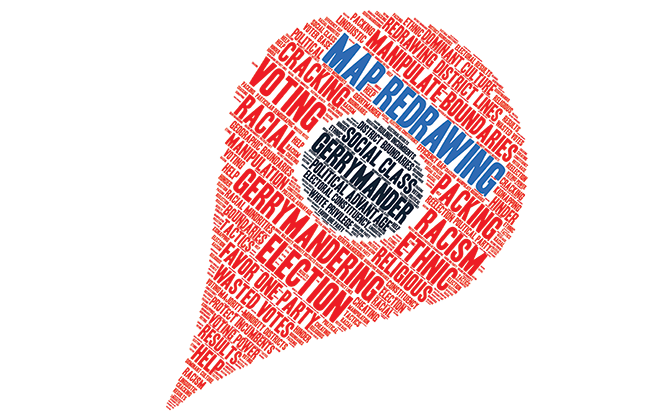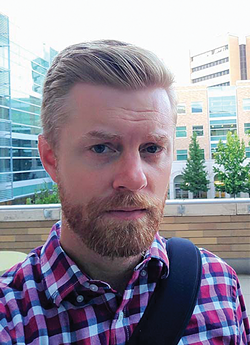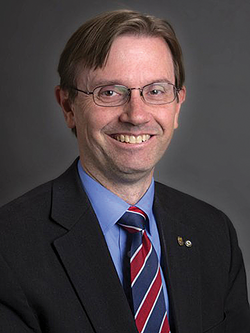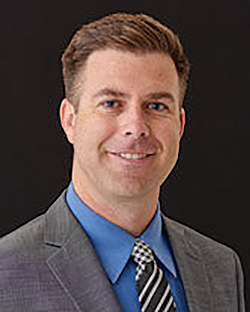
In November, roughly one out of every three Utahns voted for a Democrat to represent them in the state and federal Houses of Representatives.
But up at the Utah Legislature, only one-fifth of the House chamber are members of the state's minority party. And following January's swearing-in of Congressman Burgess Owens, Democrats are completely shut out of the state's federal delegation.
The disparity is nothing new. For the last decade—if not longer—Democratic candidates have regularly received around a third of the state's votes while winning considerably fewer than a third of Utah's electoral districts.
And that's unlikely to change when new districts are drawn this year, according to local political scientists, even with the unknown variable of a new independent redistricting commission that will recommend maps to lawmakers in what is ostensibly a check on "gerrymandering," or the strategic and intentional grouping of voters to induce an electoral outcome.
"What districts do is distort the ratio of votes to seats," said Adam Brown, an associate professor of political science at Brigham Young University. "If you win 60% of the vote, you can expect to win 70% or more of the seats without any gerrymandering at all."
But Utah's majority party can't necessarily skate through the upcoming redistricting process. Many of the state's dividing lines will have to change in response to shifts in population. And since the next chance to fix mistakes won't arrive until 2030, Republican lawmakers must place bets on where voters will choose to live—and what type of candidates they'll prefer—over the next 10 years.
That forecasting creates a choice of strategies for Utah Republicans. Either they draw a so-called "donut hole" district around Salt Lake City—effectively ceding one congressional seat to the Democratic Party—or they continue to slice and dice the capital city and hope the new decade maintains their margins of victory statewide.
And there are competing schools of thought—inside and outside the Legislature— for how to approach the maps for state House and Senate. Some say priority should be placed on preserving cities and counties intact, to the degree possible, while others insist on making districts as equal in population as possible, necessitating a more surgical approach.
"At some point, they're going to have to get things a little bit more in line," said Utah State University associate professor Josh Ryan, "or they risk losing seats or making Utah a very, very gerrymandered state."
[Disclosure: The author of this article submitted his name to legislative leaders for consideration of appointment to the redistricting commission.]
A Little Bit Country
During the 1970s, Utah was home to just two congressional districts, with the dividing line largely splitting the Beehive State into east and west halves. And after the 1980 census, Utah gained a third seat that was placed largely in and around Salt Lake County.
That donut-hole map stuck around when districts were updated after the 1990 census. But a new millennium brought with it the mantra of an "urban-rural blend," a thinly veiled justification for cracking Utah's capital city into pieces and diluting the power of urban voters.
With the 2010 census came Utah's long-desired 4th Congressional District and new calls to simply draw a circle around Salt Lake City and avoid the fight. But Republican lawmakers resisted that push, reiterating that every congressional district in Utah should be a little bit country—and a little bit rock 'n' roll.

- Courtesy Photo
- Adam Brown, BYU professor of political science
"Everybody knew what they meant," Brown said. "They wanted every seat to have the same balance of Republicans and Democrats as the state. And that's going to give you four Republicans if you do it right."
And while it's generally accepted that Utah's congressional districts are gerrymandered to help Republicans, the state-level maps that relegate Democrats to an exaggerated "superminority" status in the Legislature are more ambiguous. Notably, those maps earned the near-unanimous approval of state lawmakers across party lines.
But that's not to say state maps were free of calculated tweaking. Brown said Utah's legislative maps were drawn to minimize the number of incumbents who would have to compete to retain their seats—an approach all-but-confirmed by legislative leaders at the time—which led to some high-growth areas around Salt Lake and Utah counties being awkwardly lumped under representatives who lived elsewhere.
"That's a different kind of gerrymander that people don't care about as much," Brown said.
Brown didn't give any specifics and may disagree with this author, but the representation of Park City/Summit County, the fracturing of the Daybreak community, and the little scoop of Rose Park/Swede Town added to a south Davis County milkshake—currently represented, ostensibly, by Sen. Todd Weiler, R-Woods Cross—come to mind.
Brown said that type of voter finessing is the most likely to be mitigated by the new redistricting commission, which presumably would not be working with a list of lawmakers' addresses and would be less concerned with the doubling-up of incumbents.
The Legislature will have the final say on new maps, but Brown suggested there may not be as much of an appetite to overturn a map that threatens individual lawmakers.
"You might get some legislators grumpy about it," he said, "but that would be a much harder fight to pick, perhaps, and maybe not worth it as much as the congressional map is."

- Courtesy Photo
- Fred Cox, former member of the Utah House
Fred Cox, a Republican former member of the Utah House, said he would be surprised if lawmakers accept the boundaries proposed by the redistricting commission.
Cox drew a number of maps during the last round of redistricting, designed around the stated goal of splitting up as few cities, counties and communities as possible. That meant stretching the limits on how many more or fewer voters a district could have compared to its neighbors, which prompted opposition and threats of legal action against the state if his maps were approved.
But Cox notes that while boundary lines are set based on a snapshot of yesterday's population numbers, they remain in place for a decade as voters ebb and flow around the state.
"You can get congressional districts down to, maybe, one person. But by the time you pass it, it's changed," Cox said. "So, leave a little flexibility and keep communities together."
The Map Is Not the Territory
USU professor Ryan and a colleague published research in 2014 that looked at how maps drawn by independent commissions differ from those drawn by lawmakers.
After looking at several states before and after the creation of such a commission, they essentially found that there was no difference at all.
"Using the statistical methods we were using, we just couldn't find any results," Ryan said. "They don't really seem to be doing much differently than traditional Legislature-drawn districts."
Ryan said his work received some criticism for treating all commissions as equal, regardless of their structure or authority. But he added that as a researcher, there was not a clear, objective way to distinguish a "good" panel from a "bad" one.

- Courtesy Photo
- Josh Ryan, Utah State University political science professor
He said it's likely a question of when, not if, Utah Republicans will opt to create a safe Democratic congressional seat, rather than trying to hold on to all of them. The more a party strains to gerrymander its opposition into oblivion, he said, the more they're forced to spread their own voters thin.
"The disaster scenario [for the majority party] is instead of drawing one toss-up district or one strongly Democratic district, they make two Republican districts competitive," he said, "and now you have to fight for two seats."
And while the next decade's maps may very well stay the same or similar to what they are now, continued population growth could pose real redistricting challenges after the 2030 census.
"If they added a fifth seat, they'd almost certainly have to just create a Democratic district," he said. "They're just not going to be able to get around it if trends continue."
Cox said party leaders at the time opposed his maps for allowing a left-leaning congressional district, but he added that he didn't look at any partisan data and certainly can't stop like-minded voters from clustering together, as they are naturally prone to do.
He said the maps that were ultimately approved were unnecessarily confusing, particularly the 4th Congressional District that zigzags through a bizarre tract of Salt Lake, Utah and Juab counties. Cox said he personally lives near the meandering dividing lines in Salt Lake County, a stone's-throw from different representation in nearly any direction.
"It doesn't make any sense. People can't remember which district they live in and that, I think, is a problem," he said. "We probably would have had better-looking districts if they had just left them the way I had drawn."
When the population size of districts is prioritized over common-sense boundary lines, Cox said, that means dividing neighbor from neighbor in order to land at an instantly outdated magic number.
"You end up going across a street and picking up a fourplex, which is really stupid," Cox said. "But that's exactly what they did to avoid getting sued."

Partisan Ways Die Hard
In December, Brown posted an analysis of the state's election results looking at the performance of President-elect Joseph Biden, particularly in the greater Ogden and Provo areas.
Other media had noted Trump's improved numbers in the Beehive State compared to 2016, but Brown suggested an overlooked story was that a Democratic presidential candidate had secured the highest share of the Utah vote in a generation.
Those results don't necessarily suggest a surging Democratic Party, he said.
Yes, Biden flipped several states back to the blue column and overperformed in Utah. But those gains were limited to the top of the ticket, Brown said, with Democrats losing ground in the U.S. House and failing to flip state legislatures and governor's offices.
"I think what we really saw in 2020 is what Utah might have looked like four years ago if not for [independent presidential candidate] Evan McMullin," Brown said.
The 2020 election suggests voters reacted to Trump's personality while otherwise sticking to their partisan habits, Brown said, undermining Democratic progress in Utah and highlighting a potentially tough road for Trump should he choose to run again in 2024—something the outgoing president has repeatedly talked about doing.
"A major reason Trump got the nomination [in 2016] is because those opposed to him all held out hoping to be the anti-Trump winner," Brown said, "and instead they split the never-Trump vote."
Utahns anxious for the "purple-ing"—or even "blue-ing"—of the state should manage their expectations, Brown said. Even with changing demographics, he said it would take more than 10 years for any significant realignment to occur.
But the state is changing, Brown acknowledged, making it harder to justify the "urban-rural blend" strategy of mapping out four mini-Utahs dominated by Republicans. That approach has largely worked up til now, he said, but if the Republican majority were to slip from its current 66% of the vote to something closer to 55%, there would be risk of districts swinging toward the Democrats over a span of 10 years.
"Over time, the percentage of voters in Utah who identify as active [Latter-day Saints] is gradually declining, and that's the most Republican part of Utah," Brown said. "If that trend continues, you might have more parts of the state getting somewhat more competitive."
The first whack at new maps will be performed by the commission, structured by law to include a mix of Republican and Democratic members and at least two unaffiliated commissioners.
Cox was skeptical that the redistricting panel could be free from partisanship. Its members will have their personal biases, he said, including the nonpartisan appointees.
He opposed Proposition 4, the 2018 ballot initiative that created the independent redistricting commission. He said he agreed with the general principles of the campaign—that voter representation should take precedence—but he objected to creating another unelected, quasi-governmental body to make decisions affecting the state.
"Do we want another [Utah Transit Authority]?" he said.
He was one of the few state lawmakers who was drawn into the same district as a competing incumbent. Cox voted in favor of that map and ultimately lost reelection, but he said he would've cast the same vote even knowing it would cost him his seat.
"If I'm going to have to run against somebody, fine," he said. "That isn't the voters' fault."
ONLY once IN a decade
Just empaneled to set off the map-drawing process is the seven-member commission, announced Feb. 1, that includes former Republican Congressman Rob Bishop; two former state senators: Republican Lyle Hillyard and Democrat Pat Jones; former Utah Supreme Court Justice Christine Durham; former Utah District Judge William A. Thorne Jr.; data analyst N. Jeffrey Baker; and commission chair—appointed by Gov. Spencer Cox—Brigham Young University professor Rex Facer.
If past is prologue, that will likely mean town halls and public arguing over draft maps before Republican lawmakers huddle behind closed doors to set the playing field that will govern Utah politics for the next decade.
And even if the Legislature adopts a nakedly partisan map, there's little recourse to challenge it beyond electing new members of government. A disparity between votes cast and seats won is insufficient to demonstrate malfeasance, and attempts to argue a more nuanced measurement of gerrymandering in court have been dismissed by Supreme Court Chief Justice John Roberts as "sociological gobbledygook."
"Every political scientist in the country, whether we were doing that research or not, all collectively groaned and slapped our foreheads," Brown said of Roberts' critique.
Without an amendment to the Utah Constitution, the power of the redistricting commission is, at most, advisory. And Brown said it would take a vocal push by influential Utahns—along the lines of the party nomination fight that led to SB54—to preserve the commission's map should lawmakers opt to reject them.
"The question then becomes how much flack are they willing to take for overruling the commission," Brown said.
Cox said the same arguments from 10 years ago are likely to resurface, like whether voters are better represented in the Legislature by having their community scattered among several lawmakers or consolidated under a couple of directly accountable proxies.
There's also the question of urban-vs.-rural representation, he said, with different approaches to map drawing favoring candidates who live in less or more populated areas.
"You still have those differences of attitude, with some of the same players," Cox said. "I think that is going to be interesting to watch."
Ryan said Utahns who attempt to observe the map-drawing process should perhaps focus on the 4th Congressional District—currently held by the majority party after pingponging since its creation.
"How much do they change that?" Ryan said. "Because it's getting tight, probably too close for comfort for [Republicans]."
And for Democrats anxious for representation that approaches proportionality, the new decade may be a waiting game for new voters to come of age or relocate to the state.
"The more districts you have," Brown said, "the harder it gets to win all of them."
